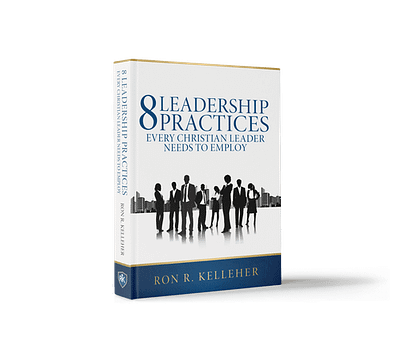A poll from Inc. Magazine asked readers, “How do you spell competitive advantage?” Customer satisfaction was listed first at 81%, quality personnel second at 48%, product performance ranked third at 44%, and price was dead last at 31%.
Shoppers want quality products. Just look at the food and automobile industries for example. A few years ago generic brands sprang onto grocery store shelves. Despite the low price people also wanted quality. The result was generic products disappeared and were replaced by higher quality private labels and national brands. In the automobile industry, the cars getting the highest buyer satisfaction scores are all foreign. They include Mercedes, Volvo, Honda, Jaguar, Toyota, and Nissan. Although they have cars in different pricing brackets most of these cars are the most expensive in their respective class. People are willing to pay more for quality.
People like good prices. That’s why so many of the discount stores like Home Depot, Lowes, Walmart, Target, Office Depot, and Staples have thrived. But if you try to sell by price, be prepared to die by price. It is very hard to establish a competitive advantage on price alone.
People also want selection which is why each of these successful retailers offers broad product selection. Many will special order items they don’t stock regularly to keep shoppers happy.
Each of these major retailers also understands the importance of customer satisfaction. It is a combination of product quality, price, service, and the customer’s expectations.
Getting Started
Here are five steps to you get you started on the path to providing excellent customer service:
1. Listen and respond to customers.
One of the best ways of finding out what customer expectations are is to talk to them. When they talk – you listen. Respond to every customer you possibly can by doing what they want. If half of your customers want to shop in your store on the way home from work, you’d better stay open past 5:00pm.
Conduct surveys. Most restaurants and hotels use comment cards. These are an excellent survey tool. When a customer puts their name and address on a survey respond to them promptly.
2. Define superior service and establish a service strategy.
Define what service will meet or exceed customer expectations. Then develop a comprehensive strategy to deliver that level of service to the customer.
3. Set standards and measure performance
Standards need to be set and employees need to know what they are. You would think this is obvious but I just encountered a situation where a major company had a service goal of paying claims within five days of receipt but they never told the people who had to approve the claims about the goal!
Once the service goals are set and communicated you need to measure performance. What good does it do if you want to pay claims in five days if you don’t know how long it took in the past (a benchmark), and how long it takes now? Measure performance versus the benchmark and versus the goal and let employees know how they are doing on a regular basis.
4. Select, train, and empower employees.
Some employees are good at providing service and some are not. Some people just don’t have service built into their systems. For jobs where customer service is important, select the people who can provide excellent service with enthusiasm. Train them initially, and continue to provide training so that they can continually improve their customer service skills.
5. Recognize and reward accomplishment.
When employees have met or exceeded customer service goals make sure that their performance is recognized. Read customer testimonials aloud in sales meetings or copy them and circulate them around the department. However, you do it make sure that no outstanding service to a customer goes without recognition. Even if it is as simple as saying, “You did a good job!”
Rewards for outstanding customer service can take many forms. You might want to provide a cash bonus or some other prize. You may want to make the recognition part of your formal performance review system. That way you can provide raises and promotions based, at least in part, on customer service.
One Final Thought
Volumes have been written about customer service. In these few short pages, we cannot address any more than the tip of the iceberg. Even if yours is not a service business like a restaurant, hopefully, you understand the importance of serving customers inside and outside your organization. If you are responsible for any kind of high-performance team then you should have an understanding of your customer’s expectations and customer service.
Writing to the Ephesians, Paul said, “Serve wholeheartedly, as if you were serving the Lord, not men, because you know that the Lord will reward everyone for whatever good he does, whether he is slave or free” (Eph. 6:7-8). Imagine that the next customer that walks through your door is the Lord, and serve him or her as if you were serving the Lord. Remember, we are to be a light to the world, and this is one way to let your light shine!
Bonus Whitepaper
To Serve or Not to Serve is also available in the form of a bonus whitepaper. This 12-page bonus whitepaper includes more information about creating a customer service centric organization, some great quotes about customer service, some meeting notes to help you run a meeting with your team, and 12 tips to help you increase your customer service scores. You can download it here:
Join the Conversation
As always questions and comments are welcome! What was your reaction to a time when you received either outstanding or less than adequate customer service? What do you do in your organization to ensure that customers receive great customer service?
I’d love your help. This blog is read primarily because people like you share it with friends. Would you share it by pressing one of the share buttons below?
Category: Skills | Quality/Excellence





Ron- two thoughts. First, I subscribe to the golden rule when it comes to service. We train the officers in our police department to treat people the way they’d like to be treated. Second, I’ve found that the “gift for gab” really helps with customer service. Folks who can strike up a conversation easily and listen well tend to provide better customer service. That has been my observation.
As for organizations, I like the approach of “over delivering.” We call it the “wow” factor. You want customers walking away utterly impressed with the calibre of service.
John,
I agree, the ability engage is an important attribute for someone on the front lines of delivering a wow factor customer service experience. From my own experience, the skill that often needs work is your second point – the ability (willingness) to listen!